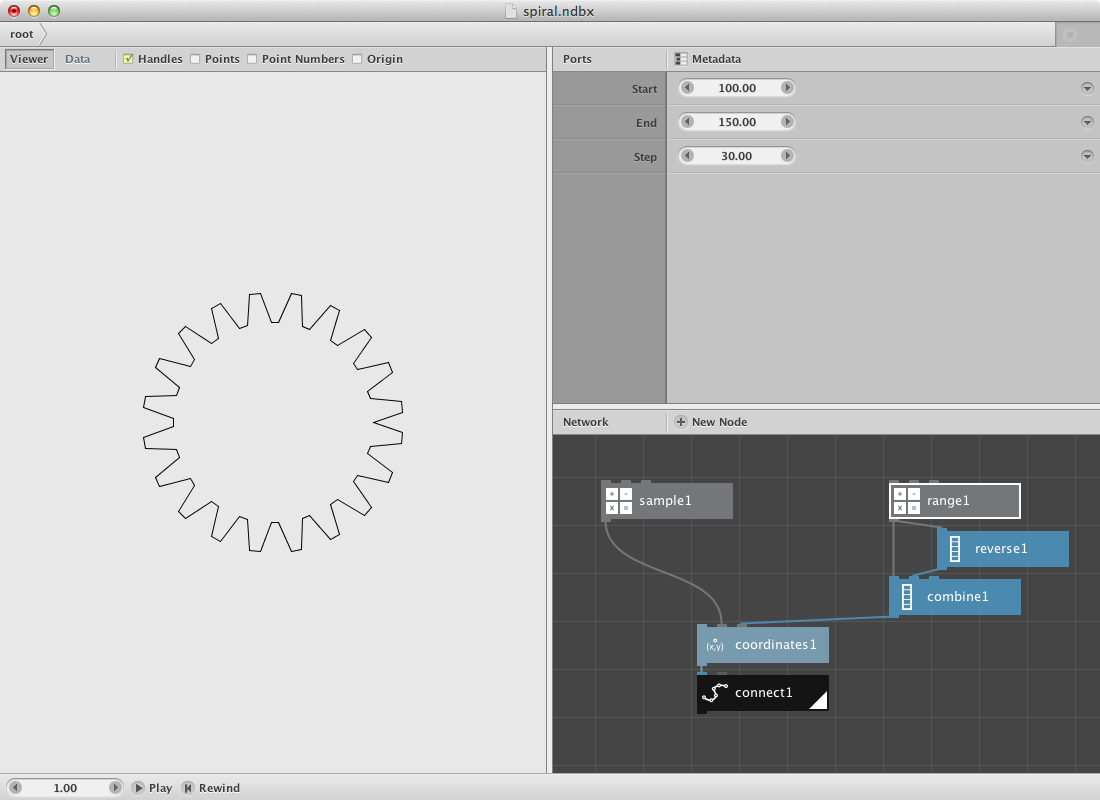
Select the SSH service and press the Options button.Į) Start the SSH service - you are now prepared for the most important step Enabling VT-x / AMD-V virtualization inside ESXi virtual machine Please follow the steps below in succession:Ĭ) Select security profile from the list on a leftĭ) Click properties on the upper right corner, and you will get the a popup with all the services on this ESXi box. There were no options to turn it on via the ESXi GUI client, so I have started to look for a solution Enabling the ssh access on your ESXi host The first issue I spotted, once I installed Oracle Virtual Box & Vagrant on my ESXi box, is its inability to start a Vagrant-controlled image due to the lack of virtualization support.
Nodebox gui free#
For quite a long time, I've been using free VMWare ESX-i hypervisor for my experiments, as it allows up to 4 virtual boxes to be run in parallel for my labs experience. type palette, colors, layout.One day I got a task to implement a Vagrant-based scenario for my client. The finishing touches are completed in Illustrator, i.e. Once the visual is looking pretty good, it’s exported as an svg and pasted into Illustrator. changing one number changes the entire set’s primary color). The complexity is worth its overhead, as it allows for flexibility to make global edits to how the set is visualized (i.e. This sounds a bit complicated, but the initial figuring-out only has to happen once after that, it’s just a matter of copy-and-pasting the same structure for each table. The sets of rectangles are then colorized and combined. The corresponding values determine the widths of rectangles, which are then aligned and offset from each other. Because the values are small, I applied a multiplication factor to each for the purpose of making the visualization more visceral. csv into NodeBox and split into two lists with “Lookup” nodes. This is the easiest and boring-est part of the process.Įach table is imported as a. For each language (Mandarin, English, and Spanish), I put together a table of three columns: value, number of syllables, number of characters. How it’s doneįirst, the data has to be prepped as a table. The idea is to visualize numbers 1–100 in the world’s three most commonly spoken languages, representing the number of syllables required to speak and the number of characters required to write each numeric value. I was inspired by James Gleick’s “The Information” to create a simple visualization of language patterns and differences in semantic vs. While it’s not right for every project, given my goal of creating a static 2D visualization of a fairly small data set, NodeBox’s ease of use and immediate feedback made it an attractive option, while its shortcomings were a non-issue. For the creation of a relatively simple, 2D visualization, using Processing seemed like using a jackhammer to pound in a nail. After playing around with some of the libraries and frameworks for Processing, as well as poring over tutorials, I was impressed and a bit overwhelmed by the software’s capabilities.
Nodebox gui software#
Also, where Processing requires the user to “run” their visualization in Java, NodeBox provides immediate visual feedback.Īt the end of the day, Processing is in many ways the superior software for visualizing data. NodeBox does 2D and 3D, but not (to my knowledge) anything interactive.

Processing can be used to create static visuals, motion graphics, interactive applets, and can work with audio.


Both softwares are open-source, but Processing has been around longer and has a much larger, more active, and more visible community behind it. not recommended for those unable/unwilling to write code), whereas NodeBox utilizes a GUI for node-based work. First off, Processing is text-based (i.e. While there’s a lot of overlap as far as functionality and capability, Processing and NodeBox vary quite a bit.

After a bit of searching, I uncovered two options: Processing and NodeBox, either of which would suit my needs. Several years later, I’m still interested in data viz, but I haven’t the slightest desire to draw and align the graphics one-by-one, or to do battle with Illustrator’s clunky and restrictive graph tools. We created our visualizations the hard way - by preparing data sets by hand and drawing one shape at a time in Illustrator. In fact, the first graphic design class I took in undergrad was focused on information graphics and data viz. Data visualization has always been of interest to me as a designer.


 0 kommentar(er)
0 kommentar(er)
